Cargo Securement Tips – [Updated for FMCSA 2023]
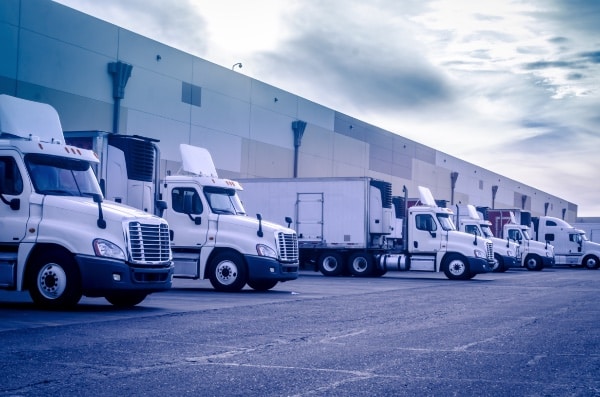
There are several factors that cause accidents on the highway and the Commercial Vehicle Safety Alliance (CVSA) regulations ensure that proper cargo securement results in safer transportation. How do you know whether you’ve securely fastened heavy or awkward loads? This short guide on cargo safety tips will showcase the proper approach to hauling cargo and other equipment, and will help keep you and your commercial drivers compliant with the FMCSA. In addition to our Cargo Securement Training product, this information will make sure your drivers are operating within the law, and keeping your cargo safe on the road.
The FMCSA & Commercial Vehicle Safety Alliance
The FMCSA or Federal Motor Carrier Safety Administration concluded that crashes were mainly due to improperly secured cargo. Cargo securement rules are being established to help specify how different cargo can be loaded.
Once you learn how to secure and tie down your truck equipment, you can safely secure and transport your cargo. The Department of Transportation, or DOT, built a set of cargo securement rules that we use to help prevent cargo securement violations in the United States and Canada.
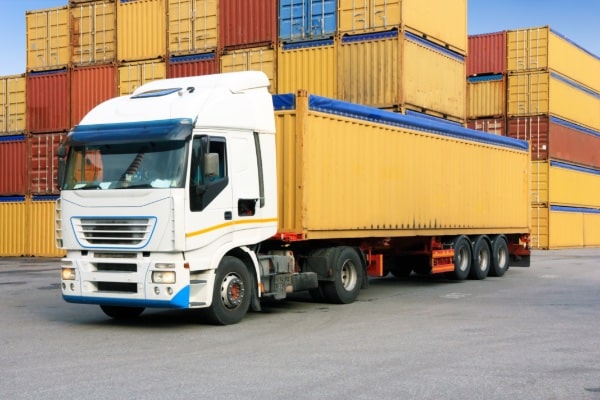
The Importance of Proper Cargo Securement Techniques
Improperly secured cargo can create serious hazards for the driver and other vehicles on the road.
The effects of a crash can be deadly if the load contains hazardous construction materials, heavy goods, or anything with sharp edges. Drivers undergoing roadside inspections can receive load securement violations from the state, local, and federal laws.
Drivers can receive citations and fines and ultimately have their truck or trailer taken out of service.
How to Use Tie Downs
Tie-downs are an essential aspect of load securement. They are assembled by connecting several securement devices together.
Tie-downs can include:
- Tarp straps
- Alloy chain
- Unmarked chain
- Ratchet straps
So how many tie-downs are required for a 20-foot load? The general regulations are that:
- For loads under 5ft and under 1,100lbs, one tie-down is required.
- For loads under 5ft but more than 1,100lbs, or loads over 5ft of any weight, two tie-downs are required.
- From 10ft, a third strap or chain must be used, and another one for every 10ft from thereon.
- So a 20-foot load would require four tie-downs.
The tie-downs can be attached to anchor points around the vehicle. Note that you should let straps air dry before repeat use if they’re synthetic, as they can weaken when wet.
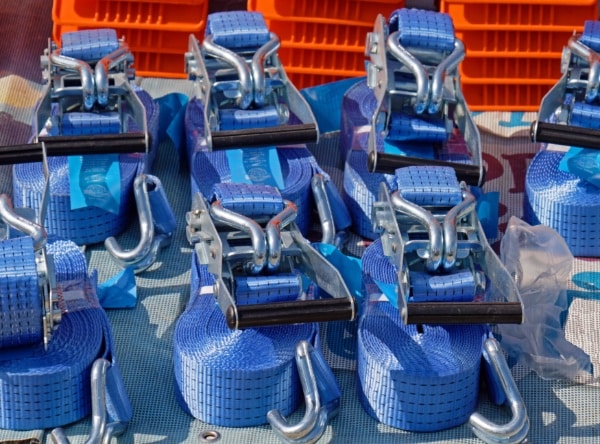
Understanding Hauling Regulations
If the cargo securement is fully contained within a vehicle, it must be restrained against horizontal movement.
In addition, if it’s on a load securement deck, it must be firmly immobilized to prevent shifting or tipping. This reinforces the vehicle’s stability.
When hauling heavy equipment, tie-downs can be used to immobilize loads on or within the vehicle.
What Are Some Suggestions for Securing a Load When Hauling Cargo?
Tie-downs and other parts of a securement system are broken down into different cargo securement practices and systems. The systems used must be determined based upon:
- Size
- Shape
- Strength
- Other distinct characteristics
How many straps do I need to secure a load, and what else should be checked? We provide some guidelines below.
Restraining Freight & Accessibility
Replacing tie-downs with an enclosed trailer can help you transport equipment without having to secure excessive webbing. Vehicle structures can help prevent insufficient tie-downs. These vehicle structures include:
- Floors
- Walls
- Decks
- Headboards
- Bulk Heads
- Anchor Points
- Stakes
- Posts
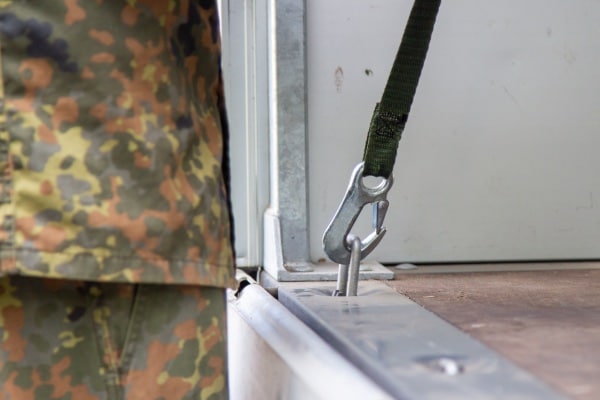
Checking Your Wheels
Ensure your wheels are protected properly. Note that powder coating a set of alloy wheels weakens them. Ensure your safe practice protects your wheels and vehicle parts. Breakdowns occur when vehicles are over-encumbered.
In an emergency, drivers should always keep a set of spare tires. A set of spare tires can help you navigate loads to a safe location. You can also check out our general Truck Driving Safety Tips for a deeper dive into truck safety issues.
Using Additional Securement
Additional securement includes blocking and bracing, which can include chocks and cradles. Blocking and bracing can also include any material used for dunnage, such as:
- Tarp straps
- Plastic Wrapping
- Liner Bags
- Matting
Examine tie-downs to ensure your equipment is not constantly exposed to a sharp edge. Cargo corner protectors can relieve stress while the cargo control equipment is attached to an anchor point. A tie-down must have enough strength to help restrain cargo.
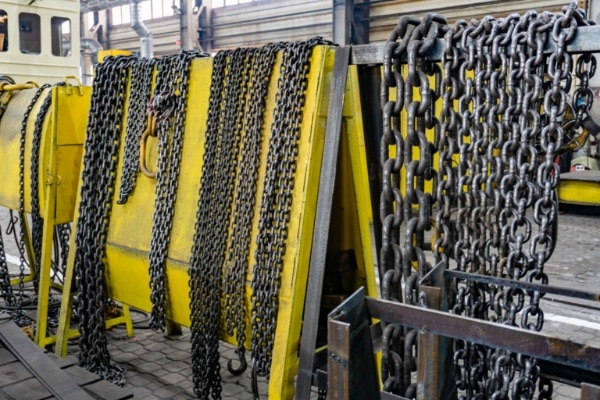
Using Specially Designed Restraints
There are many specially designed storage devices used when securing heavy loads. Likewise, loads consisting of many small parts may require smaller ties (even rubber bands can help!) to keep them together whereas large straps wouldn’t be the right equipment.
- Chains: Keeping chains locked to the trailer can help tipping and weight distribution.
- Web Sling & Web Straps: Washing slings and web slings can help prevent other construction materials from falling off the wayside. Abrasive materials can break down equipment. Extra abrasion-resistant webbing can help protect straps in harsh weather.
- Bungee Cords: Bungee cords can help weight securement while offering similar accessibility and reinforcement.
- Duct Tape: This tough stuff can act as a protecting buffer.
- Edge Protectors: Edge protectors are protective sleeves that can help reduce regular wear.
Checking Equipment for Wear
Even the best equipment will eventually degrade over time. It’s important not to have unacceptable wear and tear while securing heavy freight. Primary securement should always be examined for quality assurance – damaged tie-downs are a safety violation.
You can compromise strength and function by neglecting the state of freight and additional top load securement violations.
Securing Large Vehicles
Vehicles weighing in at over 10,000 pounds must be properly contained. Drivers must secure truck equipment at all times. Whether or not the driver loads the cargo, they are responsible for tie-downs and securing heavy loads.
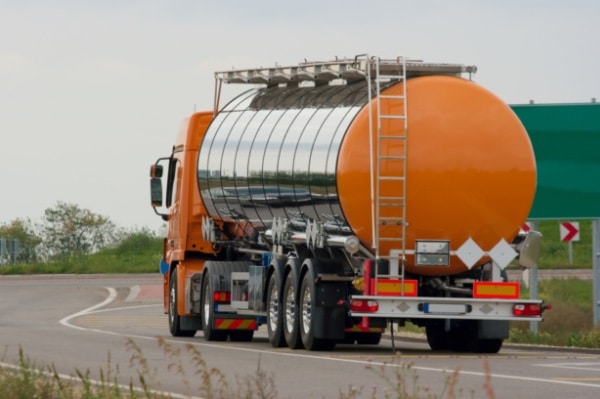
Transporting Harsh Chemicals
When transporting harsh chemicals, it’s vital to ensure that the cargo is properly secured and protected. Keeping equipment dry where water risks coming into contact with chemicals is essential. Stainless steel hardware can help protect against chemical damage, while tarps can keep critical hardware dry.
More Useful Information to Know
Vehicle Weight Rating
Establishing a tie-down procedure is only half the battle. Each vehicle manufacturer provides GVWR or a Gross Vehicle Weight Rating. This can help determine the top load limit. Each trailer contains a set maximum operating weight limit.
You can usually find this number on the inside door jamb on the driver’s side of the cab. To determine the safe weight limit, you must subtract the vehicle’s curb weight from the gross weight rating.
Curb Weight
The curb weight focuses on the vehicle’s weight without the necessary passengers or freight. In addition, this includes all the items required to keep it functioning.
For instance, this can include coolant, gas, and oil. These items are also marked on the interior door jamb.
Load Security Guidelines
The weight of the cargo will give you a better idea of what secure cargo systems you should use. Vehicles should be able to withstand 50% of the cargo in a rearward direction and 80% of the cargo weight in a forward direction.
This includes tie-downs designed to control the working load limit (WLL). This indicates the maximum load limit that a component can withstand.
Manufacturers mark each tie down with a weight load limit to help you better organize your cargo. Calculate the cargo weight to determine the aggregate load limit or AWLL. Each cargo set is only as strong as its weakest component.
Downward Restraint
Cargo can also become loose while driving down rockier roads. Be sure to double-check the weight limits and restrain any loose straps.
A tie-down is used to restrain cargo by either providing direct resistance or exerting downward pressure on the load. Downward pressure keeps cargo in place by maximizing the amount of pressure between items.
Spacers can be used to establish this resistance. Check regulations for your specific cargo type to determine the number of spacers or straps that should be used in this case.

Length & Weight of Freight
The length and weight of the cargo can alter the securement standards. Make sure the cargo is symmetrical to the spacers beneath. When tying down anchor points, keeping chains and other securement equipment at a 45-degree angle is best.
These weight standards can also change depending on exposing hardware, i.e., where it protrudes at an angle that would affect the vehicle’s balance.
All pieces of cargo, especially those prone to tipping, should be secured with more than one point of contact at all times. Chocks, wedges, and cradles can help keep cargo symmetrical to the loading floor and securely tied, preventing loads from being constantly whipped about.
The North American Cargo Standards
The North American Cargo Securement Standards is an international code of regulations that can help keep loads secure. These regulations are shared between Mexico, Canada, and the United States.
This allows loads to be evenly distributed and restrained so they may stay secure during regular operation. These standards will help vehicle operators secure loads and respond to emergencies.
Final Thoughts – Securing Your Equipment
These cargo safety tips will help you keep your cargo in check. These systems give you the best practices to help you control loads and not exceed weight limits.
This can ensure that different pieces of cargo can stay put under a wide variety of conditions. These rules and regulations grant safe work practices to help ensure that securement systems protect drivers and keep the roads safe for transport. Share these cargo securement safety tips with your team and your co-workers.